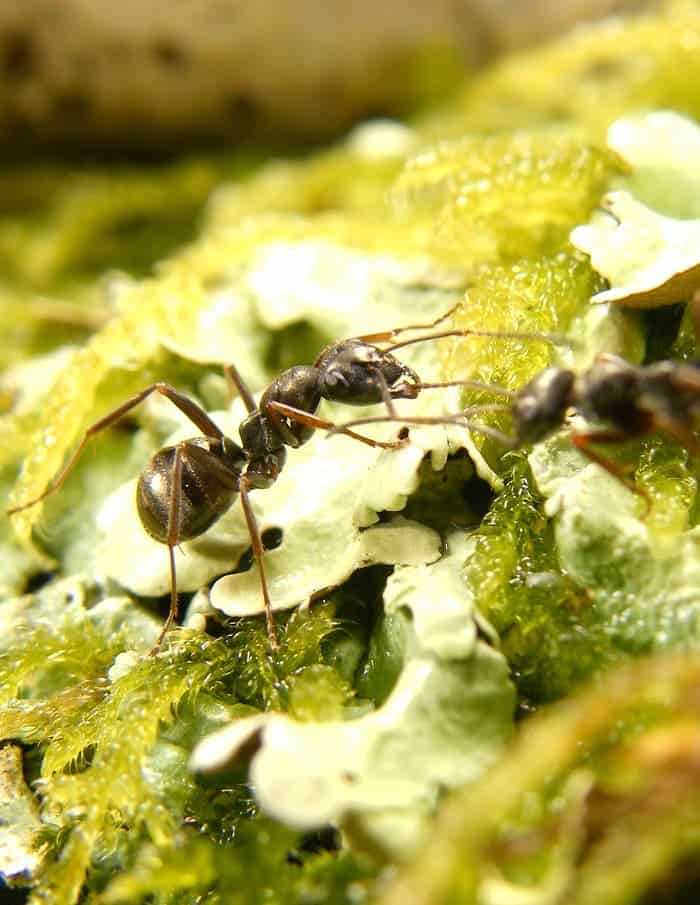The earlier cancer is detected, the higher the odds a patient can beat it. The trouble is that diagnosing is a cumbersome and expensive process, involving MRIs, multiple screenings, and highly trained personnel. This is why a lot of people were excited by the prospect of using dogs and their famously keen noses to sniff out cancer. Studies have consistently shown, for instance, how dogs can identify breast and lung cancer with a 95% accuracy compared to a biopsy. Now, researchers in France have shown that ants can sniff out cancer on par with dogs, but at a fraction of the cost.

Cancer cells have an altered metabolism that produces telltale volatile organic compounds (VOCs), and each type and subtype of cancer has a unique pattern of chemical signatures that can be used as cancer biomarkers. In other words, cancer literally smells.
In order to diagnose cancer from its odor molecules, scientists have devised chemical detectors that are calibrated to identify cancer biomarkers in the breath, sweat, and urine of a patient. But as an alternative, some researchers are training animals with a very sensitive sense of smell to act as biodetectors. Some examples of animals that can detect cancer with relatively high accuracy compared to conventional biopsies include dogs, fruit flies and even pigeons. Turns out that other insects are up for the job, as well.
Researchers from CNRS in France recently showed how a species of ant, Formica fusca, were able to differentiate healthy human cells from breast cancer cells — and did this within a few minutes of training, compared to over a year that is typically required for dogs.
“Compared to dogs, insects can be easily reared in controlled conditions, they are inexpensive, they have a very well-developed olfactory system, and hundreds of individuals can be conditioned with very few trials,” the authors wrote in the journal iScience.
Previously, the French researchers showed that F. fusca worker ants can quickly learn to associate a particular odor with a food reward and can retain this information for extended periods of time. Using the same principles of classical conditioning, the researchers now trained worker ants to associate a reward consisting of a sugar solution with an initially neutral stimulus, the odor of cancer cells.
In experiments, these conditioned worker ants placed in a circular arena were exposed to four stimuli: the odor of human ovarian cancer cells, a novel odor they’ve never encountered unrelated to cancer cells, and two empty tubes that acted as controls. Even with no reward present, the ants spent significantly more time near the cancer cells, showing the insects can recognize the presence of cancer.
The ants seem to be able to discern cancerous cells from healthy ones. In another experiment, two groups of ants were conditioned to associate the odor of either human breast cancer cells or healthy breast cells with a sucrose reward. When individual ants were placed inside the arena where both odors were present, the insects loitered near the conditioned odor. And in yet another experiment, the researchers showed that conditioned ants were able to differentiate between two different types of breast cancer.
“Using a simple conditioning protocol, we show here that F. fusca ants can detect the VOCs emitted by cancer cells. A conditioning protocol based on only three training trials was sufficient for ants to associate cell-derived VOCs with a reward. Ants were able to i) perceive the presence of cells in a medium, ii) differentiate cancerous VOCs from non-cancerous ones, and iii) differentiate between two cancerous samples based on VOCs,” the researchers noted.
F. fusca worker ants were able to perform these feats after only three trials of training, which suggests the insects can be effectively used as cancer detectors with minimal training and at a low cost.
“Ants are thus equivalent to dogs — the most studied bio-detectors — in terms of detection abilities. In some respects, ants surpass dogs because they need an extremely shorter training time (30 min compared to 6–12 months for a dog) and a reduced cost of training and maintenance (honey and frozen insects twice a week). Our simple conditioning protocol can be implemented by everyone, after a training time of about 3-day,” the researchers concluded.
For now, this is just a proof of concept, and more research is required to build a richer chemical detection profile. We’re only learning what insects are capable of in terms of cancer detection. But despite these promising results, it’s unclear how ants could be used in the field, in a medical setting to diagnose patients.






